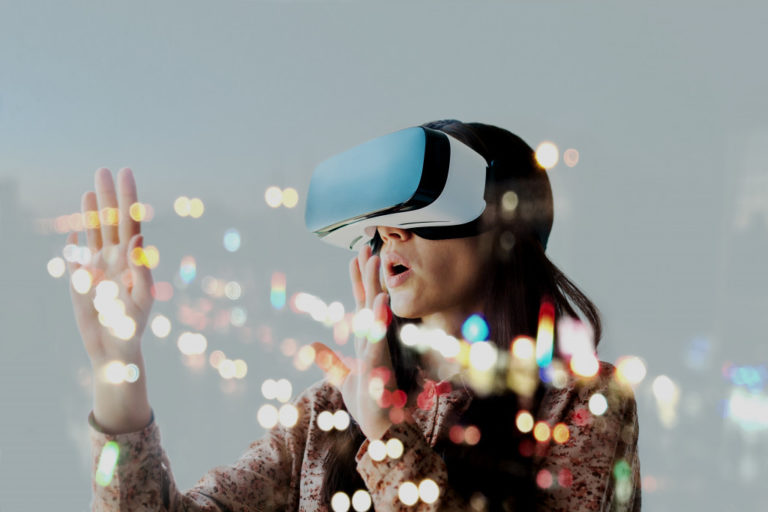In life, nothing stays the same for long. The tools and strategies used today will become obsolete with time as new inventions and innovations are discovered. But this isn’t a new trend. Humanity has always looked for ways to do things more easily, efficiently, and faster. This, together with man’s natural inclination to a comfortable life, has compelled generations to invent technologies to assist in accomplishing such tasks.
We’ve heard of and seen tools, implements, accessories, gadgets, and even machines that are no longer useful. Once upon a time, in some parts of the world, the most sophisticated machinery was the grinding stone; now, it’s mere history, long forgotten. Here is a snapshot of some of the technological advancements that today are obsolete.
1. Slide Rules

Before the invention of electronic calculators, man could calculate complicated functions like square roots and trigonometry. He could figure out the double helix of the DNA, design and build the Boeing 747, and even land on the moon. All this is thanks to the marvelous instruments that slide rules were.
These are no longer useful, especially with the advent and privilege of calculators. Also, useful are special Apps on smartphones and computers that solve mathematical problems at the touch of a button. Slide rules were commonly used in business, science, and engineering to perform calculations with limited accuracy rapidly. In-house construction would be the main tool for the measurements needed, right to detailed calculations such as those needed for gutter installation.
2. Swamp Coolers
In Ancient Egypt, there was a great need for home cooling due to the harsh desert temperatures. They found a solution in making swamp coolers by hanging blankets across the home’s entrance. Today’s modern evaporative coolers can trace their innovation to this swamp cooler technology. Though no longer useful today, they were the only air conditioning systems that served Ancient Egypt. To keep the royalty cool, servants fan wet blankets across water jugs.
They used the principle that hot air would pass over or through the blankets and cool the place. Although helpful at the time, they oozed out a swampy, dirty smell that added to unwarranted discomfort. Today, thanks to advances in science and technology, an electric fan or an HVAC system has replaced the swamp cooler. It’s among the most important aspects of the home that’s installed and serviced by an HVAC contractor.
3. Moonlight Towers
Moonlight towers lit up the streets and yards at night. They also illuminated sizable towns and cities since they were satisfactorily bright. They gave off a blue-white light and were made to mimic the moon.
Though no longer useful, they were pretty useful then. They’re currently listed as historic and create an appreciation for the structures still in place. There are reputable electrical contractors thanks to the now-established electrical production and distribution industry.
You can hire them to install and service street lighting in neighborhoods, towns, and cities. Bulbs have today been replaced by LEDs from the Carbon Arc. Today’s streetlights are energy efficient, and one can choose a solar-powered variety. Moonlight towers required shielding to reduce the glare, thus wasting most of the light.
4. Iceboxes

In the early twentieth century, cooling devices in compact, non-mechanical boxes were common in kitchens before electric-powered refrigerators. Though no longer useful, they helped store food. They later came to be known as iceboxes after the modern electric refrigerators.
Today, people still mimic the icebox with bagged ice cubes. They often keep water and other drinks cool during short trips or picnics. The advantage of refrigerators over iceboxes is that modern refrigerator designs come with convenient compartments. They have temperature features suited for various food types, ensuring quality and taste preservation.
5. Audio Cassettes
It’s unsurprising to encounter young adults who’ve never heard of audio cassettes. Also called compact cassettes, these were analog magnetic playback and recording accessories that came in two formats. Some were fully recorded either with music or other teachings and information.
The other was the blank cassette. Blanks enabled people to record their music via a cassette recorder instead of on an already recorded cassette. These cassettes are no longer useful, nor are they needed in a market that has become highly digitized.
Note that the current versatile audio technologies evolved from the cassette technology. They were useful, especially in dance class and entertainment clubs that needed specific music played. Fast-forward to today. Today, you can play music instantly using a smartphone, a flash disk, or by uploading or streaming it via Wi-Fi.
6. Typewriters
This was a machine with an array of keys that, when struck, would print a single character on paper. The key would be pressed onto an inked ribbon, which would, in turn, leave an impression on the paper attached to the ribbon. Around the 19th century, the term typewriter was used to refer to a person who used it, often an office secretary.
With the advent of the modern computer, they’re no longer useful today. Back then, it was hard to imagine a literary work without them, as they were the standard office machines until the 1980s. Entire books were published, and official letters were drafted for employers or the property manager.
Notably, today’s computer keyboard layout traces its origin to the ancient typewriter. The luxury of editing as many times as possible, deleting and moving words around while typing, was impossible with a typewriter. Any typing mistake meant the paper had to be removed and a fresh one installed, starting the process again. This often caused lots of paper and time wastage.
7. Rolodexes

These were small files designed to manage business cards containing the name, kind of business, and owner’s contact details. They acted as desktop card indexes in one’s office. Today, they’re no longer useful as they have been replaced by digital and cloud storage since the turn of the millennium. Today, we have directory software where data, such as names and contact details of clients, are stored digitally.
These software developments have made the analog Rolodex a relic of the past, one that’s no longer useful. Smartphones have eradicated the need to carry a load of cards, as they can store thousands of names and contacts for instant retrieval. A smartphone can organize contacts alphabetically and add pictorial features for better identification.
Accessing contacts is convenient as it only needs a specific name search, and all the details appear on the screen. This is incomparable to digging through mounds of cards and checking them manually, one by one. It’s a testament to how technology has evolved and impacted how we store and access information.
8. Pagers
Just before the widespread use of mobile phones, small radio devices were hooked around the waist belt or fitted inside the pocket. This device, known as a pager, was activated from a central point and emitted a series of bleeps or vibrations, alerting the owner, through a short message, that someone was looking for them.
Pagers were mostly a one-way means of communication and only received messages. However, two-way pagers could use an internal transmitter to acknowledge, respond to, and originate message alerts. Although pagers are no longer useful, doctors, those involved in cleaning services, or any work that requires alerts or contacts still find these relics useful. Pagers ensure privacy as one doesn’t have to give out their cellphone contacts to tons of people to maintain contact.
9. Pack Animals
Carrying heavy loads was done with the help of animals such as donkeys, elephants, oxen, yaks, reindeer, and even dogs. Heavy pieces of luggage would be laid on their backs. The animals would then ferry the loads by wheeling the carts. Today, this mode of transport is no longer useful or needed, except in very remote locations.
Today, wild animals are largely protected by the Department of Wildlife Services. More people own cars and can transport their stuff without burdening the animals. Hire a transportation company to do the heavy lifting when shipping heavy or delicate items. A reputable moving company can help you move your house. Doing this means you can rest assured that your property is professionally handled and will reach the desired destination safely and perfectly.
10. Muzzleloading Firearms

The muzzleloading firearms are distinct by their projectile and propellant charge. They are loaded through the muzzle end rather than through the breech. They were mostly used for hunting sports.
With the current stringent rules on poaching and the protection of wild animals, they are no longer useful. They may be allowed only in designated hunting areas. People with a fascination for guns and hunting buy these firearms mainly for display.
Due to its target shooting abilities, farmers used it for mercy killing. If the animals were badly injured or severely sick, the muzzleloader firearm was used to end the poor animal’s life. Most people buy guns to protect themselves. However, before owning or firing a gun, get a license. You might also want to be acquainted with a gun charges attorney for protection should you find yourself on the wrong side of gun laws.
11. The Floppy Disk
A floppy disk was a magnetic medium that stored and read data using a read head. It comprised disc storage with thin, flexible magnets encased in a rectangular plastic carrier. Between the 1980s and the 1990s, the floppy disk was the common computer storage medium available as a removable diskette.
It was read and written using a floppy disk drive and could only store tiny amounts of data, equivalent to the size of one image. Today, there are high-capacity storage drives, like USB flash drives and external hard drives. Today’s devices can store massive amounts of data in pictorial and video formats. There’s also cloud storage that eliminates the need to use a portable gadget altogether.
12. Film Cameras
Film cameras used a film roll to capture important memories and events for millions of families. The process of developing a photograph took a long time. People had to wait days or weeks before receiving their photo printouts.
Before embarking on a trip or when having a special event, it was typical for one to buy film rolls and batteries to keep the camera going. The camera was operated by a knowledgeable person competent enough to capture the best images. Photos were taken at a time of day when there was enough light to guarantee the sharpest images.
The film was printed in a darkroom using special chemicals. Exposing the film before treating it meant losing all your images and the film roll. This was a double loss because neither the memories nor the film could be retrieved.
The printed images were likely to have imperfections in terms of resolution. Nonetheless, they stored treasured memories. Modern lenses are superior to film. Digital sensors can shoot sharper images with more resolution, producing almost life-like images.
13. VHS Tapes
These were widely used for entertainment and played on a VHS machine hooked to the TV. One would use them to watch movies or record TV programs to watch later. Although DVDs momentarily replaced VHS, digital streaming made VHS tapes obsolete.
With VHS, you could only rewind and forward blindly. But with digital streaming, you can do that to the desired scene. You’re also not confined at home in front of the TV to watch a movie, which you can watch anywhere on your smartphone.
Also, the days of renting movies are long gone. Today, you can pay and download movies from the internet or stream them. There’s good news, however: if you still have your cherished home videos, you can convert them into digital media, so you don’t have to lose memories.
Innovation will always be needed as current technologies evolve. Tools, machinery, and methods evolve with time. The good thing is that they can be upgraded into finer, more sophisticated, and more efficient appliances. Although the above technologies are obsolete, they have shaped the technological advancements you enjoy.
Future instruments of technology will make what you currently cherish no longer useful. It’s therefore important to embrace change as it comes, for as long as it lasts. However, when it comes to change, avoid the temptation to hold on to old technologies and miss out on the next big thing.

















